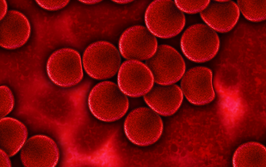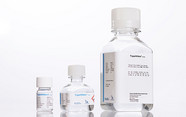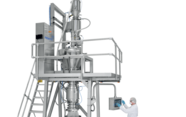Gene Therapy Meets Nanotechnology
Researchers explore how ocular gene delivery strategies for diabetic retinopathy could be improved using nanotechnology
Stephanie Vine | | 3 min read | News

Researchers are exploring a combined approach using gene therapy and nanotechnology to address diabetic retinopathy (DR), a leading cause of vision loss among adults. A new review, led by scientists at Curtin University and collaborators from Australia, New Zealand, and Ethiopia, evaluated recent progress in bio-nanotechnological tools for delivering gene therapies to the retina, with the goal of improving treatment specificity, longevity, and safety.
Diabetic retinopathy affects the blood vessels of the retina after prolonged high blood glucose levels, with its global prevalence is expected to reach 160 million by 2045. While current treatments such as anti-VEGF injections, laser photocoagulation, and corticosteroids can slow disease progression, they are invasive and often need to be repeated frequently. As the authors point out, “these treatments have drawbacks such as frequent injections, tissue damage, and invasiveness,” and they “primarily target advanced stages of the disease.”
In response to these limitations, gene therapy is being investigated as a way to potentially intervene earlier in the disease course and reverse some of its underlying mechanisms. The review details how various gene therapy strategies such as gene augmentation, RNA interference, and CRISPR/Cas-mediated genome editing can be used to modulate genes involved in angiogenesis, inflammation, and oxidative stress – which are all key drivers of DR.
However, the ability to deliver genes to the retina remains a technical challenge. The eye's layered barriers restrict drug diffusion, prompting interest in nanotechnology to help overcome these obstacles. According to the authors, “nanotechnology-based gene delivery presents a novel approach for addressing DR by improving therapeutic precision and overcoming physiological barriers in the retina.”
Various nanocarriers, including liposomes, dendrimers and solid lipid nanoparticles, have been investigated for their ability to safely deliver genes to retinal cells. The review cites that “the integration of nanotechnology into gene therapy offers multiple advantages, including protection against genetic material degradation, targeted delivery, and sustained release”. For example, polymeric nanoparticles such as PLGA and PEI have shown low cytotoxicity and high gene transfection efficiency in vitro. RNA-based carriers like siRNA nanoballs and lipopolyplexes are also being tested for their ability to modulate VEGF expression.
Gene delivery routes are also evolving. Subretinal, intravitreal, and suprachoroidal injections each offer distinct advantages and limitations. Subretinal injection, while precise, is invasive and surgical. Intravitreal injection is less invasive but less effective at targeting photoreceptors. Suprachoroidal injection is emerging as a promising middle ground. “Suprachoroidal injections... potentially lead to broader gene expression” while “provok[ing] fewer systemic immune reactions than intravitreal injections,” the authors note.
Clinical trials are already underway. One example, RGX-314, uses an AAV8 vector to deliver an anti-VEGF gene via the suprachoroidal space. Others, such as FT-003, 4D-150, and SKG0106, employ similar vector strategies with different delivery routes and targets. These therapies are intended to “reduce treatment frequency and improve visual outcomes,” particularly for patients with diabetic macular edema or advanced DR.
Despite these advancements, challenges persist. “There are still DR mechanisms that are not fully understood, which hinders targeted gene therapies and precise cell or tissue targeting,” the authors acknowledge. They add that “gene editing and replacement therapies are effective for known genetic disorders, but not for polygenic disorders due to instability, degradation, and potential off-target effects”.
Nonetheless, the integration of nanotechnology and gene therapy is providing a new framework for addressing DR earlier and more precisely. While further research and refinement are needed, the review signals a shift toward less invasive, more durable interventions aimed at the underlying pathology rather than its symptoms.

Making great scientific magazines isn’t just about delivering knowledge and high quality content; it’s also about packaging these in the right words to ensure that someone is truly inspired by a topic. My passion is ensuring that our authors’ expertise is presented as a seamless and enjoyable reading experience, whether in print, in digital or on social media. I’ve spent fourteen years writing and editing features for scientific and manufacturing publications, and in making this content engaging and accessible without sacrificing its scientific integrity. There is nothing better than a magazine with great content that feels great to read.



















